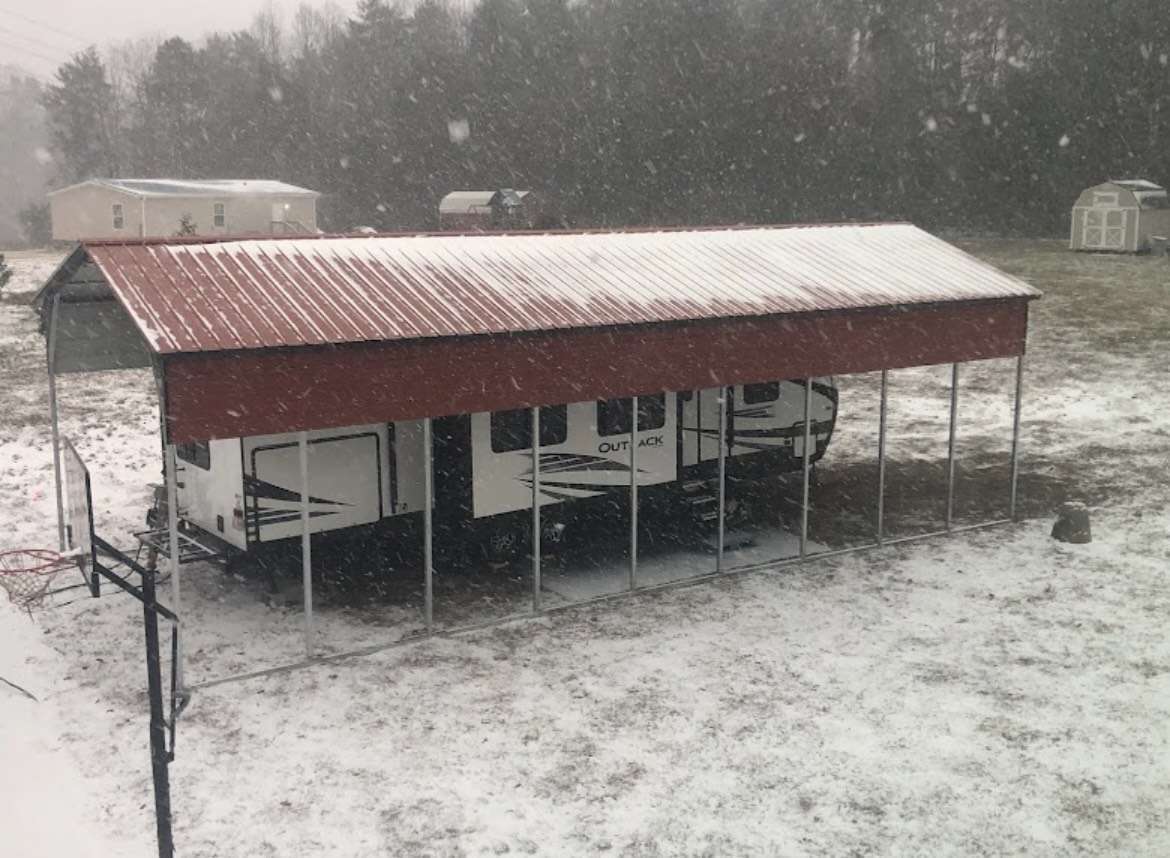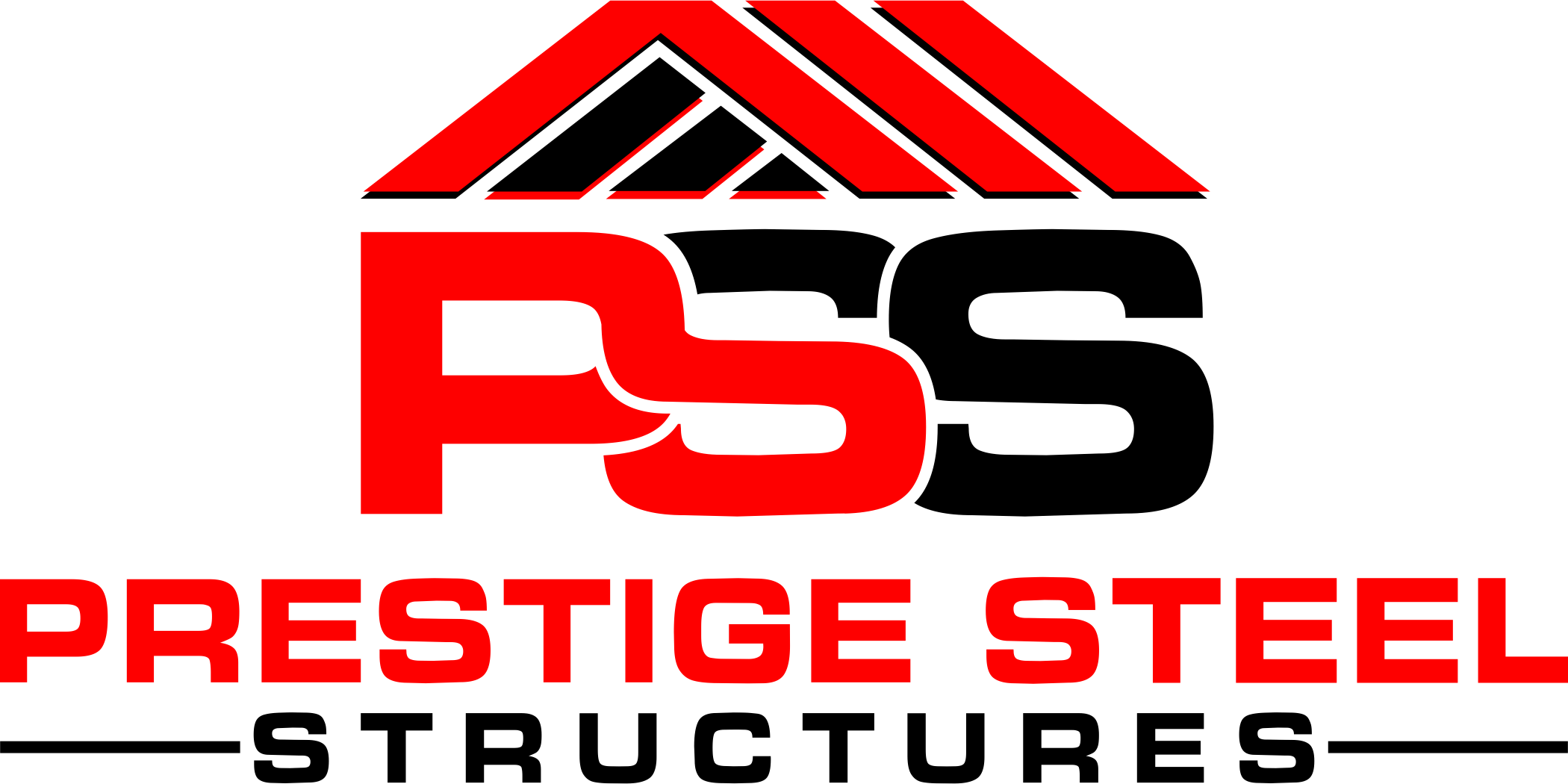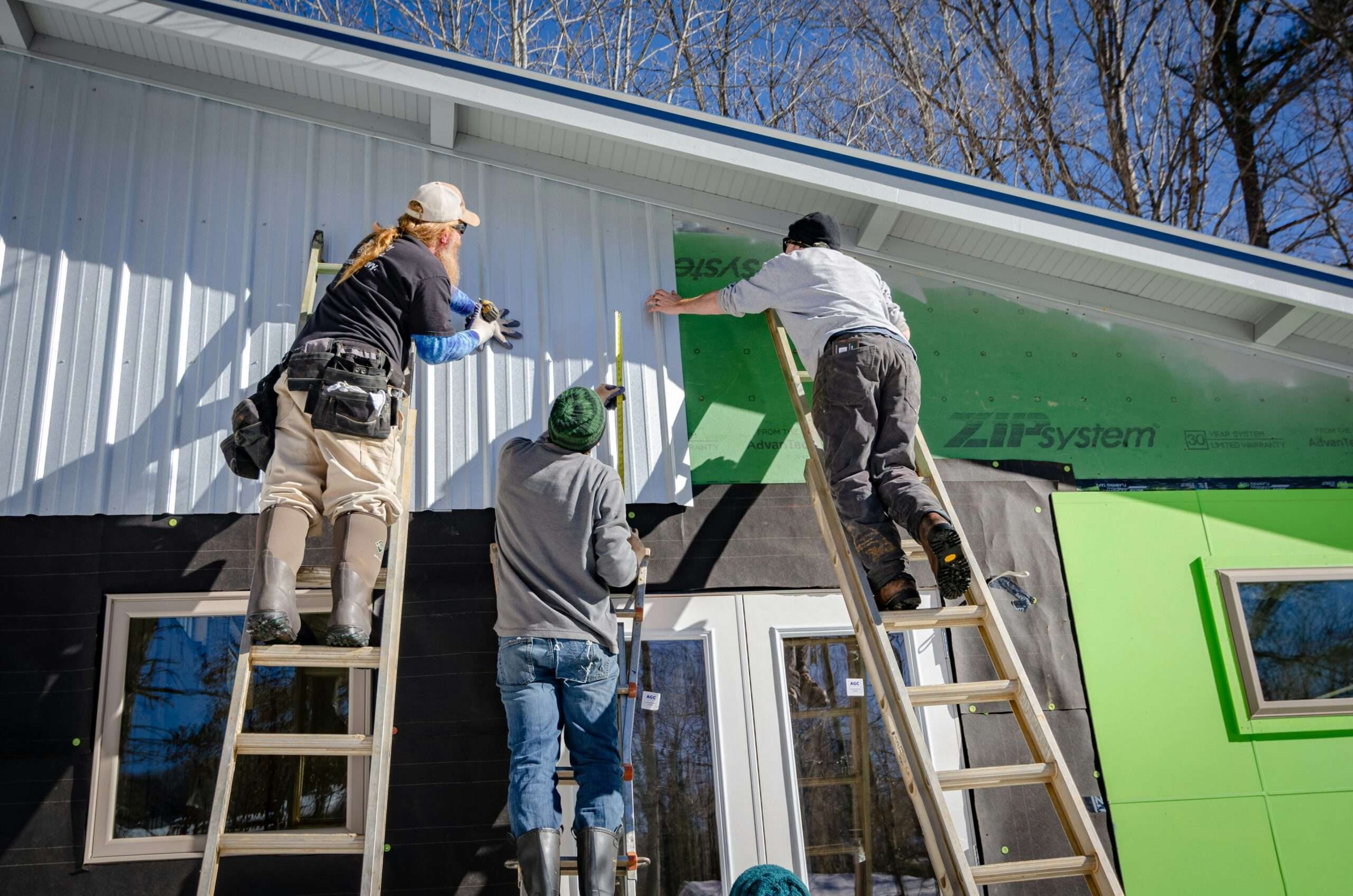A metal building is the most affordable, durable, easy-to-install structure with high tensile strength.
Metal buildings are primarily about function rather than form. Prefab metal buildings, whether used for offices, garages, or storage, are often utilized daily, making it easy to overlook basic maintenance tasks until a significant structural problem arises.
As a result, if metal sheds or barns remain unused for an extended period, bacteria growth and other undesirable microbes can make the place unpleasantly smelly.
Daily wear and tear can cause issues such as water leakage, rust, or corrosion, which may weaken the metal structure, reducing the overall strength of metal buildings.
As the saying goes, ignore your metal building for a while, and you will end up with a larger maintenance dilemma.

Benefits of Building Maintenance
Safety
A neglected building is a disaster waiting to happen. Take, for instance, the collapse of the Champlain Towers in South Florida in 2021. The structural supports, made from reinforced concrete, were damaged, likely due to unaddressed deterioration from water exposure. This tragic event led to the death of 98 people, 11 injuries, and nearly $1 billion in property damage.
When crucial maintenance is overlooked, the results can be catastrophic. Regular building maintenance significantly enhances safety and helps prevent costly or tragic incidents.
Cost Savings
Skipping regular building maintenance to save money is a short-sighted approach. Planning a budget for ongoing long-term upkeep is much more manageable than dealing with the unpredictable costs of unmanaged deterioration. It also costs significantly less than emergency repairs. Several strategies can help you plan ahead and keep building maintenance costs down, such as:
- Using a CMMS: Track asset life expectancy and get alerts when equipment is nearing the end of its useful life.
- Scheduling preventive maintenance: Set up systems for accountability to ensure tasks aren’t overlooked.
- Increasing productivity: Automate activities like preventive maintenance scheduling and purchasing workflows.
- Checking for energy efficiency lapses: Identify and fix drafts or leaks.
- Managing assets and inventory: Measure usage and identify costly assets in terms of energy and maintenance.
Improved Building Functionality
Like any machine, a building will deteriorate without regular maintenance inspection and repair. When systems within your building fail – whether a utility or part of the infrastructure – it becomes less usable.
Regular maintenance allows for early detection of emerging issues, enabling timely intervention. It also ensures that components are less likely to break down, preventing outages and disruptions.
Compliance
Knowledge about best practices for building safety and maintenance evolves over time. Governments enforce regular maintenance through strict standards to ensure occupant safety.
Regular building maintenance is essential to comply with ever-changing building and safety codes, as well as state and federal regulations. It also minimizes liability and legal risks for your organization.
Low Maintenance for Commercial and Residential Metal Structures
The low maintenance cost of commercial metal buildings makes them popular across the nation. Prefab metal structures require minimal care for upkeep.
Roof panels, doors, windows, and other metal building accessories can be cleaned easily with a soft-bristled brush and mild laundry detergent.
Other prefab metal building parts can be maintained with these simple cleaning processes.
Common Problems from Lack of Metal Building Maintenance
Your metal building is a significant investment that requires occasional attention. Regular checks can prevent major damages and extend its lifespan. Without proper maintenance, you may overlook structural damages.
Neglecting timely metal building maintenance can lead to significant repair issues. In areas with fluctuating weather or temperatures, it’s crucial to monitor for rust and corrosion. These issues can reduce the building’s aesthetic and visual appeal.

Expert Tips for Metal Building Maintenance
If you notice minor issues arising in your metal building, these maintenance tips will help prevent potential damage to the structure.
Thorough Cleaning of the Structure
Regularly washing your metal building with warm water and a cleaning solution every 3-4 months can remove dirt and maintain its original color and shine. If your building is in a heavily industrialized area, consider a power wash three times a year.
Preventive Measures:
Mold and rust thrive in moisture, so close all windows and doors tightly when washing.
Cover plants and bushes with tarps to protect them.
Turn off all power supplies, especially external electrical sockets and lights.
Cover all utility boxes, exterior lights, power outlets, and other openings to prevent water from penetrating the building.
This task can be a DIY project if you follow all preventive measures carefully.
Insulation Check
Insulation in metal buildings helps control moisture, temperature, and noise. Ignoring insulation maintenance can lead to energy loss and restricted airflow. Insulation blankets may fall due to various factors, including adjacent building components.
Maintenance Tasks:
Replace insulation bands.
Modernize or upgrade the insulation system.
Secure insulation with friction washers or glue pins—clean the metal panels for adhesion and use one pin per square foot.
Lace banding over purlins, leaving the banding open to feed the insulation blanket through.
Insulation maintenance can be technical, so call experts if you notice any damage.
Check for Loose Roofing Fasteners and Rust
Regular roof inspections can prevent structural problems caused by weather, loose or damaged fasteners, external physical damage, or corrosion. Moisture can weaken the roof’s surface materials.
Steps to Follow:
Remove surface rust from fasteners with a scraper.
Check the fastener; if clean metal is visible after wiping, it’s fine. Replace if it shows deterioration.
Incorrectly placed bolts or missing screws can weaken the structure’s tensile strength.
Consult your metal building company for inspections and guidance on proper maintenance.
Check Gutters and Drains
Ensure that drainage pipes function correctly to avoid water overflow and leaks. Clogged drains can cause water to overflow, leading to rust, mold, and corrosion.
Inspection Steps:
Check for and remove any blockages in drains and gutters manually.
Flush the drain with a power washer to eliminate smaller elements.
Inspect areas often missed in DIY projects, such as the back of the gutter and bends in plastic guttering.
Professionals can provide thorough inspections and ensure everything is clear.
Oil the Hinges and Doors
Regularly check and maintain door and window hardware to ensure they open and close smoothly.
Maintenance Tips:
Ensure closure hardware, locksets, and hinges open and close naturally.
Oil hinges and check for damage.
Inspect door seals and frames, repairing any loose fasteners and cleaning any mold. Replace if damaged.
Apply the same maintenance to windows to maintain firm seals and proper function.
Repair the Paint
High-quality paint on metal structures maintains their appearance and protective value longer when properly maintained. Over time, dirt accumulation can affect the panels’ look.
Steps for Paint Repair:
Identify minor scratches and clean off dirt, grease, and other residues.
Apply a layer of primer followed by paint on the cleaned spot and let it dry.
If you can’t find the correct paint shade, contact your metal building company for professional assistance. They can match the original finish, ensuring your structure looks as good as new.
Benefits of Metal Buildings
- Durable
Metal buildings can withstand strong weather conditions and constant use. These structures are not likely to rot like wood and can protect against seismic events, rain, wind, and snow.
- Low Maintenance
Unlike structures made from traditional building materials, metal buildings are easier to clean and maintain.
- Pest ResistantMetal does not attract termites and is not susceptible to other destructive pests.
- Energy Efficient
Energy efficiency and proper insulation of metal buildings help save cooling and heating costs.
- Fire Retardant
Metal is not susceptible to fire hazards.
- Low Insurance Costs
Metal is highly fire resistant and other natural disasters. Durability and superior tensile strength further decrease the insurance costs of the building.

Factors Affecting Maintenance of Metal Buildings
Maintaining your metal buildings requires careful consideration of various factors. It’s not something you can approach haphazardly. Here are the key aspects you need to keep in mind:
Weather Conditions
Understanding the weather conditions in your area is crucial before undertaking the maintenance of metal buildings. Frequent rain can lead to corrosion and rust, significantly affecting the building’s integrity. Additionally, strong winds can cause considerable structural damage, necessitating more frequent checks and repairs.
Age of the Building
The age of your metal building directly influences the maintenance schedule. Older buildings generally require more frequent care compared to newer ones. For instance, if your metal building is old, you might need to conduct maintenance every three to four months. On the other hand, newer metal buildings typically only require maintenance once or twice a year.
Usage of the Building
The building’s purpose also plays a significant role in determining the maintenance needs. Metal buildings used for commercial purposes usually need more attention and upkeep than those used for residential purposes. This is because commercial buildings often experience more wear and tear.
Location and Surroundings
The environment surrounding your metal building can significantly impact its maintenance needs. If your building is located in a dusty, dirty, or debris-filled area, such as a construction site, it will require more frequent and thorough maintenance to keep it in good condition.
Building Design and Materials
The specific design and materials used in your metal building also affect how you should approach its maintenance. Metal buildings primarily require care to prevent and address rust and corrosion. Knowing the materials can help you tailor your maintenance strategy effectively.
Maintenance History
Your building’s maintenance history is another critical factor. If you have been diligent with regular maintenance, you might be able to stick to a bi-annual or annual maintenance schedule. However, if the building is old or hasn’t been maintained consistently, more frequent inspections and upkeep might be necessary.
Conclusion
Maintaining a metal building is essential to preserving its durability, functionality, and overall value. Regular maintenance tasks, such as cleaning, checking insulation, inspecting roofing fasteners, and ensuring proper drainage, can prevent significant structural issues and extend the building’s lifespan. Metal buildings, known for their durability, pest resistance, energy efficiency, and low insurance costs, require minimal upkeep compared to traditional structures. However, neglecting basic maintenance can lead to costly repairs, decreased safety, and reduced efficiency.
Regular inspections and preventive measures help detect and address potential problems before they escalate. For instance, cleaning your metal building every few months can remove dirt and maintain its appearance. Insulation checks ensure energy efficiency and proper temperature control, while inspecting roofing fasteners and gutters can prevent leaks and water damage. Oiling hinges and repairing paint can also enhance the building’s functionality and aesthetic appeal.
In addition to these practical steps, understanding factors such as weather conditions, the age of the building, usage, location, and maintenance history is crucial for developing an effective maintenance schedule. By considering these factors, you can tailor your maintenance approach to meet the specific needs of your metal building, ensuring it remains a valuable asset for years to come.
Ultimately, investing time and resources in regular metal building maintenance not only safeguards the structure but also provides peace of mind, knowing that your building is in optimal condition. This proactive approach helps avoid unexpected repair costs and ensures a safe and efficient environment for its occupants.
FAQs Metal Building Maintenance
Why is regular maintenance important for metal buildings?
Regular maintenance prevents significant structural issues, extends the building’s lifespan, and maintains its durability, functionality, and overall value.
How often should I clean my metal building?
It’s recommended to clean your metal building every 3-4 months, or more frequently if it’s located in a heavily industrialized area.
What are common signs that my metal building needs maintenance?
Common signs include water leakage, rust, corrosion, loose roofing fasteners, and malfunctioning doors or windows.
How can I prevent rust and corrosion in my metal building?
Regular inspections, cleaning, and ensuring proper drainage can help prevent rust and corrosion. Using rust-resistant coatings and promptly addressing any signs of damage also helps.
Is professional maintenance necessary for metal buildings?
While many maintenance tasks can be done yourself, some, like insulation replacement or major repairs, may require professional expertise to ensure proper handling and longevity.


